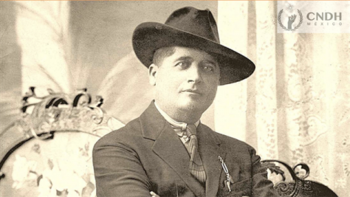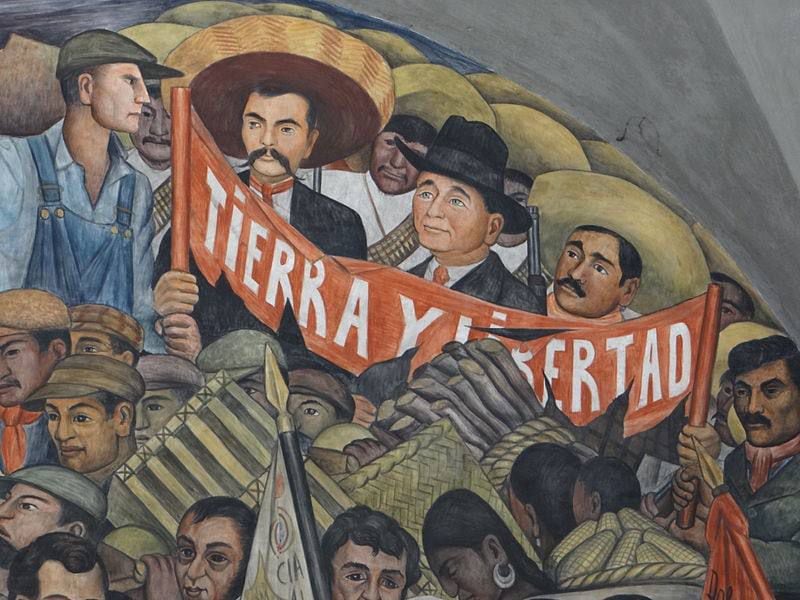
On Tuesday, March 31, 2022, during the “morning” conference, President Andrés Manuel López Obrador (AMLO) proposed that the new Tulum International Airport (AIT) be called “Felipe Carrillo Puerto Airport”.
López Obrador asked the Secretary of National Defense (SEDENA), Luis Crescencio Sandoval, to consider that the new airport project being built on the Yucatan Peninsula, be named after the former governor of the entity in response to his opponents, who said, “do not want transformation” from Mexico.
The president related the proposal to call the new airport Felipe Carrillo Puerto with the fact that in the area where the airport is being installed it is within the boundaries of the municipality with the homologous name.

He also assured that this will be “an international and quality space” like the recently opened Felipe Ángeles International Airport (AIFA) , since the work will be carried out by military engineers and will help reduce the saturation of the Cancún air terminal with between 500 and 600 operations per day.
Felipe Santiago Carrillo Puerto was a Mexican politician, journalist and revolutionary leader who was born in Motul in the state of Yucatan on November 8, 1874. He was the second child in an established marriage between Adela Puerto and Justino Carrillo. He was noted for being leader of the Southeast Socialist Party and governor of Yucatan from 1922 to 1924.

This Mexican hero, so important to the revolutionary struggle in the south of the country, studied in Mérida, where, from a very young age, he learned the Mayan language motivated by his interest in defending the rights of indigenous peoples. This caused him to be imprisoned when he was only 18 years old for inciting a people to tear down a fence built by landowners that prevented the passage of the Mayan community.
All his life he was determined to work for the recognition of this sector of the population, so since he was young he preached the Constitution of 1857 among the Mayan day laborers of the haciendas that produced henequén, material that was occupied in the textile industry.
Carillo Puerto's decision led him to participate actively in the Mexican Revolution following the path of the Zapatista movement, so much so that when armed struggle came to the peninsula, he founded the Southeast Socialist Party and from there fought the tyranny of those who wanted to take their land from the peasants.
But his enemies soon pursued him, so he had to go into exile in 1918 after heading the legislature of his entity and calling for democratic elections. He returned until 1920 with the aim of joining Agua Prieta's plan. And in this way, he was elected a deputy of the Congress of the Union to occupy the government of Yucatan in 1922.
His commitment to the Mayan people was such that his first speech as governor was delivered in that language, something that had never been seen by a Mexican governor.

In his administration he was seen as a progressive instituting cultural property for the Maya, granting political rights to women to vote and be voted, and establishing the revocation of officials based on vox populi, always listening to their governed.
During the 20 months of his term of office he worked very hard for the benefit of the most impoverished sectors. He expropriated the henequen industry, organized the Yucatan Export Commission and promoted the League of Medium and Small Producers of Henequen, reactivating the distribution of land as well as creating the Mexican Academy of the Mayan Language.
In 1923, he had to flee the country abroad because his ortist enemies had more power than his faction in wanting to control the country and replace President Alvaro Obregon.
Carrillo Puerto was overthrown by the leaders of the Cooperative Party, who arrested him in Quintana Roo and shot him on January 3, 1924. In 1927, the Local Congress declared him the Benemeritus of Yucatan and he was named Apostle of the Race for his defense of the Mayan peoples.
KEEP READING:
Últimas Noticias
Debanhi Escobar: they secured the motel where she was found lifeless in a cistern

The oldest person in the world died at the age of 119

Macabre find in CDMX: they left a body bagged and tied in a taxi
The eagles of America will face Manchester City in a duel of legends. Here are the details

Why is it good to bring dogs out to know the world when they are puppies




